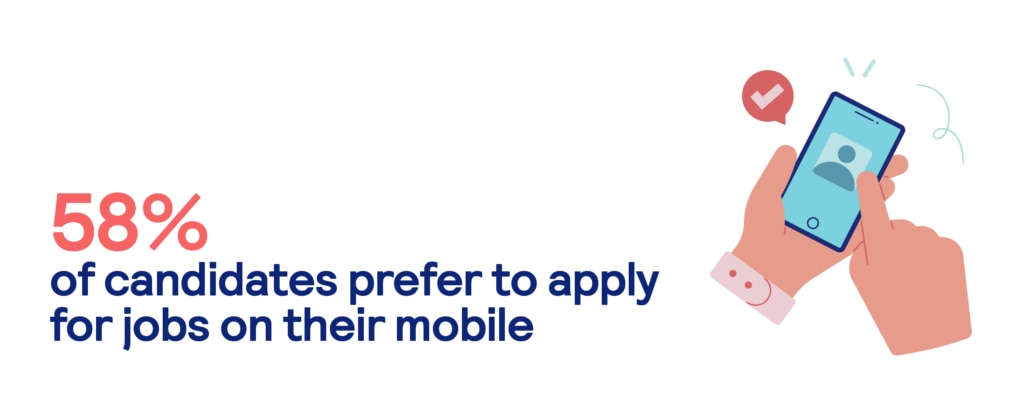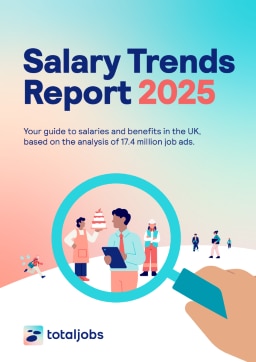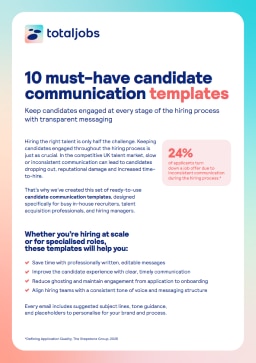
How to write an effective job advertisement that attracts top candidates
Table of Contents
- What is a job advertisement?
- Job ad essentials
- Taking job ads to the next level
- What to avoid in job adverts
- FAQs

How to Improve Job Application Quality
With one in three UK workers planning to look for a new role this year, employers have a significant opportunity to attract top talent. Skilled jobseekers are likely to have several options available to them, meaning organisations must work harder than ever to stand out.
A key part of this is creating compelling job advertisements that not only capture attention but also speak directly to the candidates you want to attract.
In this guide, we walk you through how to write a job advertisement that makes a real impact, highlighting what makes your organisation unique and appealing to your ideal applicants.

Uncover tips for boosting your application quality in our complete guide
What is a job advertisement?
A job advertisement is often the first impression a candidate has of your organisation. It’s essentially a written notice designed to inform, attract, and encourage the right people to apply for a specific role.
A well-crafted job ad will go beyond simply listing responsibilities. The best examples will communicate who you are as an employer and what makes the opportunity you can offer worth pursuing. As such, this should include insights into things like:
- Culture
- Values
- Mission
Difference between a job advert and a job description
The terms job advert and job description are often used interchangeably, but they serve different purposes in the hiring process.
A job advert is an external-facing marketing tool used to attract candidates to apply for an open role. While adverts will contain lots of key information related to the role, its primary aim is to generate interest and encourage applications.
In contrast, a job description is a more detailed document that outlines the duties, responsibilities, and expectations associated with the role. While it can be shared externally during the recruitment process, it plays an internal role, helping managers, HR teams, and employees align on performance standards and role requirements.
The essentials of an effective job advertisement
Attracting the right candidates takes more than simply listing the day-to-day tasks and benefits associated with a role. A truly effective job advertisement is strategic, well-structured, and tailored to resonate with your ideal applicants.
When writing a job advert at the outset of your recruitment process, there are several key components that can significantly enhance your chances of success. Let’s explore what to include in a great job ad.
1. Use an accurate and appealing job title
The job title is one of the most important elements of your advert and plays a major role in determining whether they click through. According to our findings, 39% of candidates are uncertain about applying for roles when job titles are unclear.

Tip: Using a clear, specific, and industry-recognised title makes your vacancy more searchable and ensures it reaches the right audience.
Generic job titles, for example, Marketing Assistant, can attract a broader pool of applicants, while niche specialised titles like B2B SaaS Marketing Executive, are more likely to draw in candidates with relevant experience.
2. Introduce your organisation
Today’s jobseekers want to know more about they could be working for. In fact, 66% of candidates say they’re more likely to apply for a role if the advert includes a statement about company values.
As a result, it’s important to use job adverts to provide a short but meaningful introduction to you as an employer. So, true to highlight your values and what makes you unique, as this helps candidates decide if your workplace aligns with their own aspirations and expectations.
3. Provide salary details
Salary transparency has become a key priority for jobseekers in recent times. Our research shows that 72% of applicants consider salary the most important factor when applying, while 74% avoid roles that don’t disclose pay.
So, where possible, try and include either a specific figure or salary range in your adverts. Being upfront like this not only demonstrates trust and fairness, it also attracts candidates whose expectations are aligned with what’s on offer, saving time for everyone involved.
4. Specify the location
Clarity around location is essential. Ambiguous or incomplete location details can lead to applications from candidate who may later realise the role is impractical due to commuting or relocation needs.
If the role includes remote, hybrid, or field-based work, make sure this is clearly outline in the location section and within the body of the advert. This transparency helps to set expectations and ensures alignment from the outset.
5. Outline the responsibilities of the role
Clearly listing the main responsibilities of the role helps candidates understand what their day-to-day work will involve. But it’s not always easy, with 69% of jobseekers saying they found expectation in job ads unclear in their most recent search.
While aiming to strike a balance detail and readability, using active verbs can help bring these duties to life, for example “manage”, “coordinate”, or “deliver”. The content should also be tailored to the role or sector as much as possible, with our research showing that healthcare professionals prefer detailed job responsibilities, while technical or vocational roles may benefit from a more concise format.
It’s also useful to consider information around reporting lines, team structures, and any cross-functional collaboration, as this gives candidates a more complete picture of how they’ll fit into your organisation.
6. List the necessary criteria
An effective advert needs to clearly state the skills, experience, and qualifications needed for the role in question. This will help potential applicants assess their suitability and ensure more relevant applications are received.
This should include a mix of:
- Technical skills (e.g. software proficiency, industry knowledge)
- Soft skills (e.g. communication, teamwork, adaptability)
- Educational requirements
However, it’s important to avoid being overly prescriptive with requirements. Our research shows that 54% of employers are struggling to hire entry-level talent, yet 37% still insist on candidates having completed university education, thereby potentially overlooking capable individuals with alternative qualifications.
Additionally, 30% of recruiters consider long tenure in previous roles and experience at top-tier employers essential, which could inadvertently exclude strong candidates who may not fit those specific moulds but possess the right skills and potential.
In short, there is potentially a wide pool of qualified candidates employers can tap into by reconsidering the criteria listed on their job ads.
7. Include a Diversity and Inclusion (D&I) statement
Diversity and inclusion are central to building a positive, forward-thinking workplace, and job adverts need to be careful to never include discriminatory language, whether intentional or not.
By including a D&I statement in your job postings, your organisation can demonstrate it’s to commitment to equality, fairness, and inclusivity. Nearly half (45%) of jobseekers consider this an essential part of a job advert, as it signals a safe and supportive environment for all applicants.
This statement doesn’t need to be long, but it should be sincere. For example:
We are committed to creating an inclusive workplace and welcome applicants from all backgrounds, experiences, and identities.
Taking job adverts to the next level
To truly stand out in a competitive job market, employers must go beyond the fundamentals of writing a job advert.
While including the basics is essential, the most successful ads offer additional information that appeals to what candidates are really looking for, helping you attract applications and convert top talent more effectively.
Emphasise learning and development opportunities
Professional growth is a key motivator for today’s workforce. According to our research, 69% of employees have changed jobs due to a lack of learning and development opportunities, while 9 in 10 their employer to provide more training opportunities.
Including details about your organisation’s commitment to ongoing development is a powerful way to appeal to ambitious candidates. Wherever possible, outline specifics such as:
- Training budgets
- Mentoring or coaching programmes
- Opportunities to attend workshops or industry conferences
- Access to internal or external courses
Demonstrating a culture that encourages continuous learning will help you connect with ambitious applicants who are looking to improve their skills and advance their careers.
Highlight additional benefits
Benefits packages play a significant role in a candidate’s decision to apply for a role. While most organisations offer statutory entitlements like annual leave, those that go above and beyond will naturally stand out.
In fact, we found that 58% of jobseekers prefer adverts that clearly list all of the available benefits. So, in order to make your job advert more appealing to candidates, consider including:
- Extra days of annual leave
- Regular team events or wellbeing initiatives
- Health insurance of wellness budgets
- Enhanced parental leave
- Pension contributions above the minimum
- Flexible or condensed working hours
By tailoring the benefits section of your job advert to showcase your competitive edge, you can ensure that candidates see the added value of joining your organisation, in turn making you an employer of choice.
What to avoid in job adverts
An effective job advert is not just about what you include. It’s also about what you choose to leave out. Avoiding common pitfalls will ensure your job postings are inclusive, clear, and compelling.
Unnecessary jargon
Workplace buzzwords and acronyms can quickly confuse or alienate candidates, particularly those new to the industry or career switchers. Research shows that jargon can make potential applicants feel unsure about a role, discouraging them from applying.
Tools like the Totaljobs Jargon Decoder help eliminate unclear language from your job ads, making them more accessible and applicant-friendly. By translating complex terms into plain English, you’ll attract a wider, more diverse pool of talent.
Accidental bias
Even subtle word choices can have a big impact. Studies show that gender-coded language in job adverts can unconsciously signal whether a role is traditionally held by men or women, thereby making some candidates less likely to apply.
To avoid this, use the Totaljobs Gender Bias Decoder, which replaces male-coded terms with neutral or more inclusive language. This simple step helps ensure your job ads appeal broadly and support fairer, more balanced hiring.
Spelling mistakes and grammatical errors
Accuracy matters. Spelling errors and poor grammar can undermine your credibility as an employer at best, and at worst may even cause confusion around the role you’re advertising.
To prevent mistakes, consider drafting your ad in a Word document or using proofreading tools before posting. Clear, error-free writing reflects professionalism and attention to detail, qualities candidates expect from their future employer.
Long ads
In a fast-paced digital world, attention spans are short, especially with more candidates browsing jobs on mobile devices. Long, dense blocks of text can overwhelm readers and reduce engagement, with 40% of candidates saying they feel uncertain about applying when too many requirements are listed in a job advert.
So, try and keep your job ads concise, well-formatted, and easy to scan. Use bullet points for responsibilities and person specifications, break up text with subheadings, and focus on the key points. A streamlined, digestible format makes your advert far more appealing and more effective as a result.
Frequently asked questions (FAQs)
What is a job advertisement?
It’s an external-facing announcement designed to inform potential candidates about a role, showcase your employer identity, and motivate the right people to apply.
How does a job advertisement differ from a job description?
A job advert is a marketing tool aimed at attracting applicants, while a job description is a detailed internal document outlining duties, responsibilities, and expectations.
Why is an accurate job title important?
What should I highlight in the responsibilities section?
How do I specify job requirements effectively?
Receive the latest recruitment resources and
advice to boost your hiring
By providing us with your details you agree to our privacy policy and for us to keep you updated with the latest news, events,
and special offers from Totaljobs.













